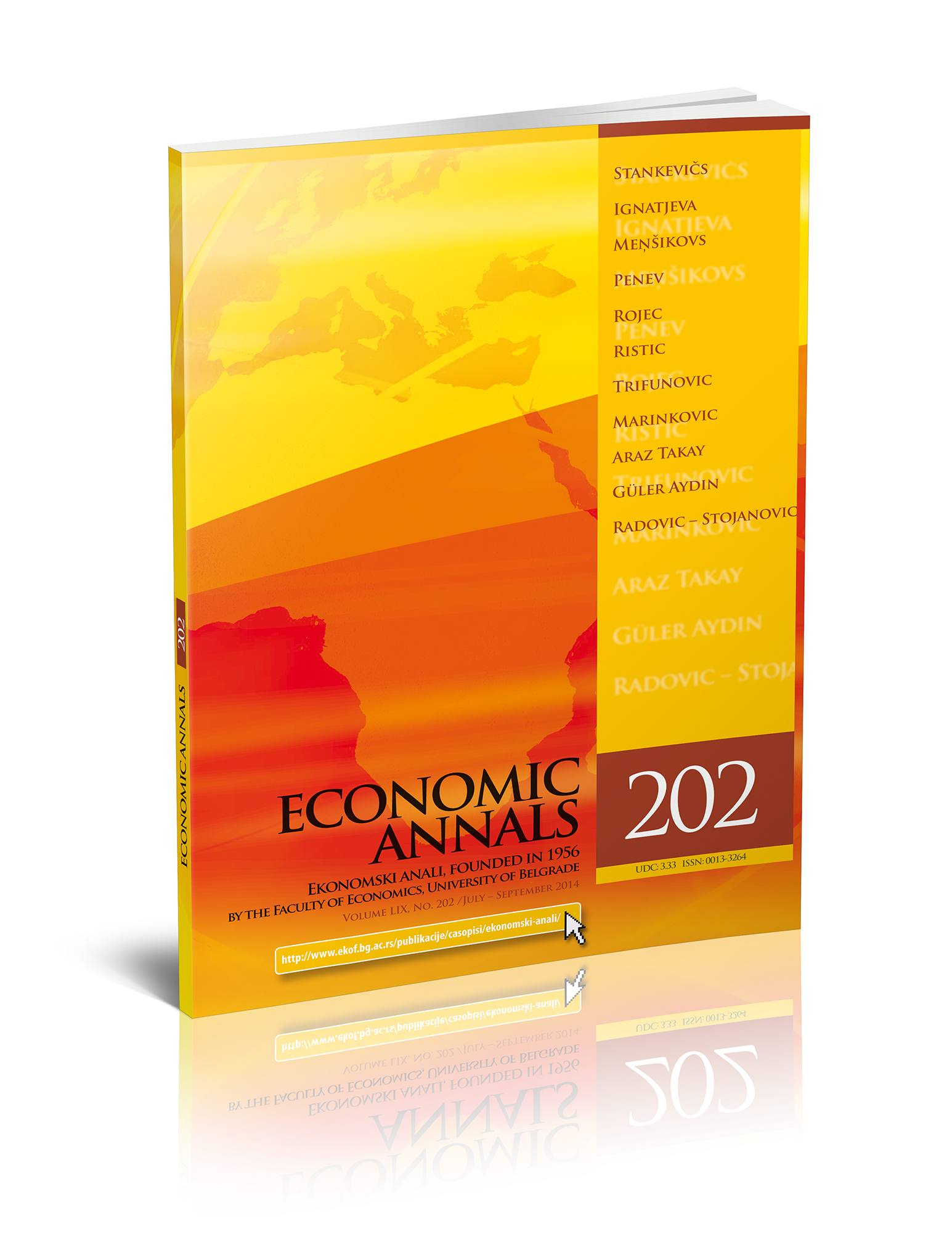THE CYCLICAL CHARACTER OF ECONOMIC POLICY IN SERBIA 2001-2012
##plugins.themes.bootstrap3.article.main##
##plugins.themes.bootstrap3.article.sidebar##
Jelena Radović – Stojanović
Abstract
This paper investigates the cyclical character of economic policy in Serbia in the period 2001-2012. For this purpose the cyclical movement of the following monetary and fiscal variables have been analysed: M2 money supply, the retail price index, the consumer price index, and the real effective exchange rate as the monetary policy indicators, and budget revenues and budget expenditures as the fiscal policy indicators. In the evaluation of the cyclical character of the economic policy, cross-correlation between the cyclical component of economic policy indicators and the gross domestic product at various lags has been observed. The results of cross-correlation analysis suggest that the budget expenditures are countercyclical and lead the aggregate cycle while the budget revenues are procyclical. The cyclical character of M2 money supply in the Serbian economy is somewhat contradictory, so further investigations of the cyclical character of monetary policy and mutual interdependence of money and output are required. The real effective exchange rate is countercyclical. The prices are procyclical and lag behind the cycles in aggregate economic activity. The procyclical character of prices indicates that the causes of the cyclical fluctuations of aggregate economic activities in Serbia in the period from 2001 to 2012 were on the demand side.
##plugins.themes.bootstrap3.article.details##
Keywords
Growth cycles, countercyclical economic policy, Serbia
JEL Classification
E32, E52, E62
Issue
Section
Articles
How to Cite
Radović – Stojanović, J. (2014). THE CYCLICAL CHARACTER OF ECONOMIC POLICY IN SERBIA 2001-2012. Economic Annals, 59(202), 157-182. https://doi.org/10.2298/EKA1402157R
How to Cite
Radović – Stojanović, J. (2014). THE CYCLICAL CHARACTER OF ECONOMIC POLICY IN SERBIA 2001-2012. Economic Annals, 59(202), 157-182. https://doi.org/10.2298/EKA1402157R

